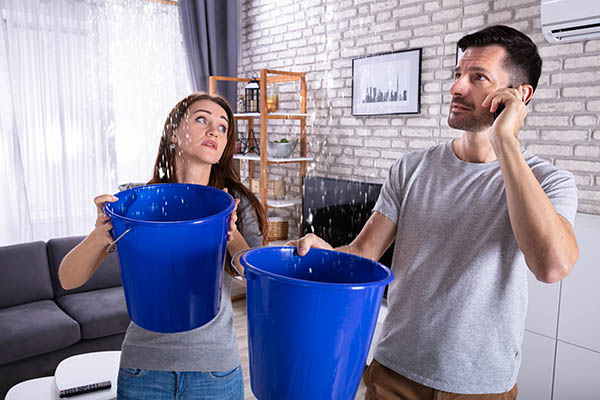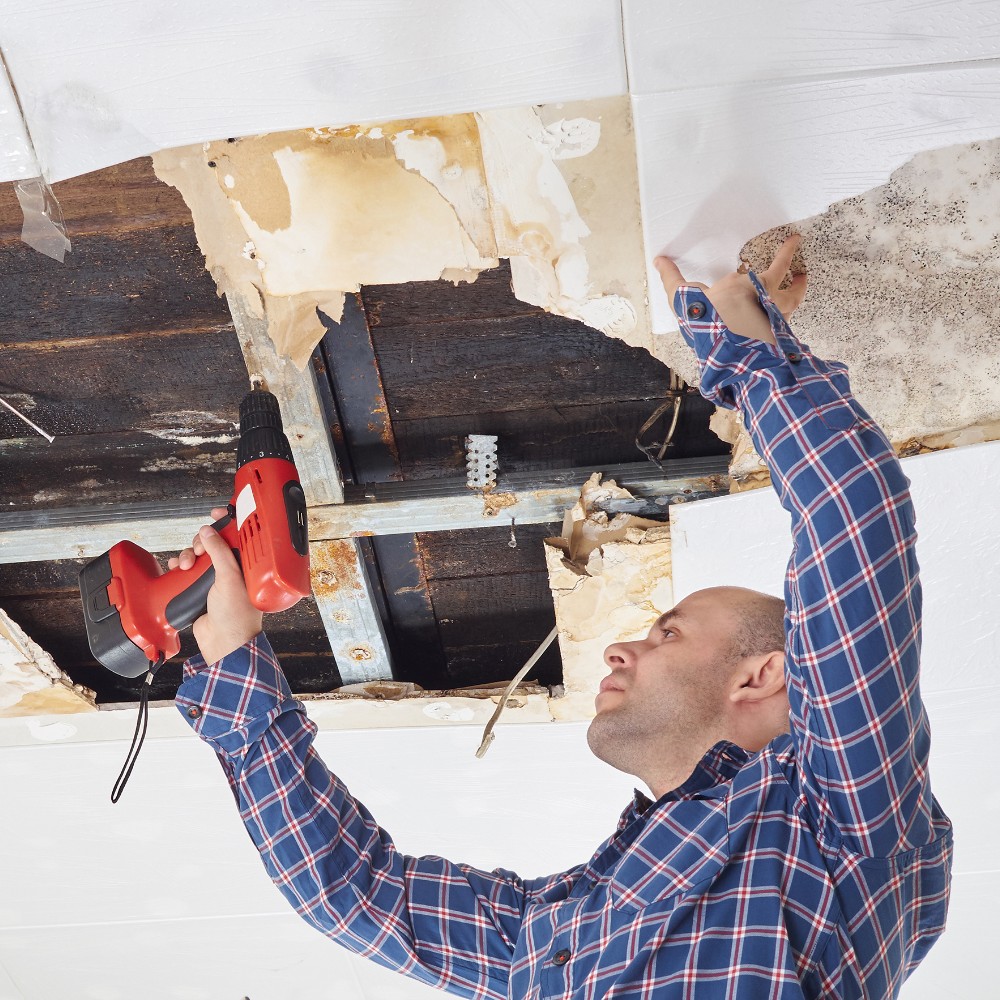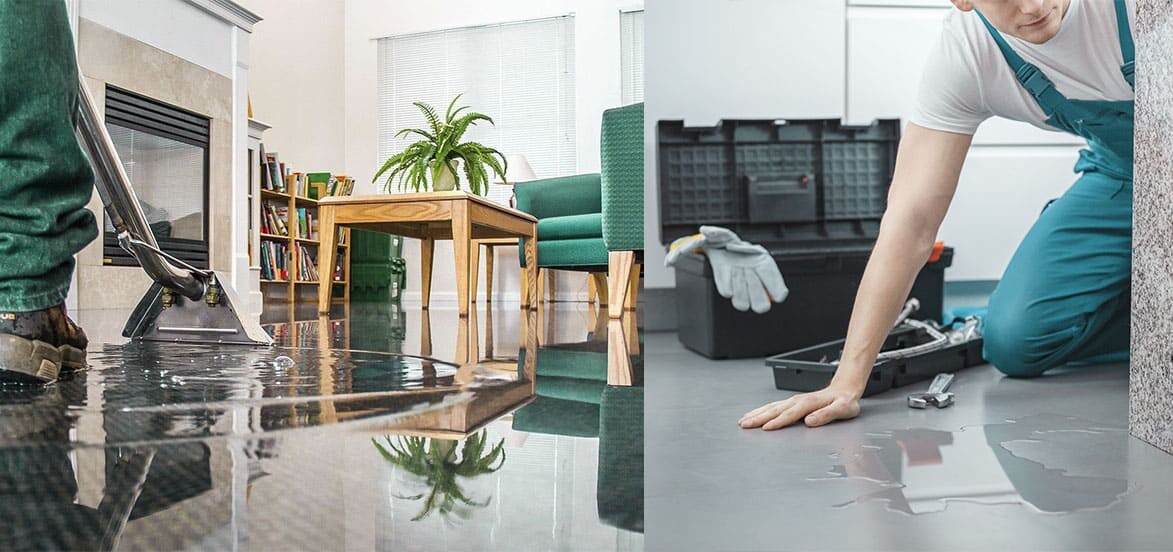Key questions before choosing a Water Damage Restoration company
Wiki Article
Water Damage Restoration 101: Comprehending the Process and Cost
Water damage can strike unexpectedly, leaving property owners in a state of complication. Comprehending the remediation process is important for reliable healing. From assessing the damage to selecting the ideal provider, each action affects the general outcome and expense. Variables such as the sort of water damage and seriousness also play a considerable duty. What are the certain strategies utilized in restoration, and exactly how can one prepare for prospective expenditures?Sorts Of Water Damage

Preliminary Analysis and Examination

Water Removal Strategies
Adhering to the preliminary evaluation, effective water removal methods are used to alleviate damage and stop further concerns. These methods involve the usage of specialized tools such as completely submersible pumps and industrial-grade vacuum cleaners - Emergency Water Removal. The option of approach depends on the quantity of water existing and the type of materials impacted. For standing water, submersible pumps are generally made use of for quick removal, while vacuums are optimal for extracting water from carpetings and upholstery. In addition, progressed techniques like water extraction mats might be utilized for hard-to-reach areas - Water Damage Restoration. The objective is to remove as much water as feasible, minimizing the capacity for mold and mildew development and architectural damage. Motivate and efficient water extraction is vital in the overall water damage repair processDrying and Dehumidification Process
Once the water extraction is total, the drying out and dehumidification process ends up being important to recovering the affected area. This stage usually employs industrial-grade dehumidifiers and air movers to effectively lower moisture degrees. The dehumidifiers attract damp air, removing excess moisture, while air moving companies distribute air to accelerate dissipation. Surveillance devices is usually used to track moisture and temperature levels, ensuring ideal drying conditions. The duration of this procedure can differ relying on the degree of the water damage and environmental elements. It is vital to completely dry all affected materials, consisting of wall surfaces, flooring, and furnishings, to stop mold and mildew growth and structural damage. Proper implementation of this action is essential for a successful restoration outcome.Cleansing and Sterilizing Damaged Areas
As soon as the drying process is total, a thorough preliminary evaluation and examination of impacted locations is essential to determine contamination degrees. Efficient cleansing techniques and ideal items should after that be utilized to eliminate debris and discolorations. Sanitization and disinfection methods are necessary to assure that unsafe virus are eliminated, restoring the room to a safe condition.First Assessment and Examination
Before beginning any remediation initiatives, a complete first analysis and examination of the impacted locations are vital for reliable cleansing and sanitizing. This process includes determining the extent of water damage, figuring out the resource of the water breach, and assessing the products impacted. Examiners generally try to find indicators of mold growth, structural integrity problems, and damaged personal belongings. The analysis likewise includes checking moisture levels making use of specific tools to guarantee no hidden water pockets stay, as these can cause more problems. Documenting the findings is essential for intending the following actions in the restoration procedure. A thorough preliminary analysis allows restoration experts to design a targeted method for efficient cleansing and sanitizing, eventually minimizing damage and health risks.Cleaning Methods and Products
Efficient cleansing and disinfecting of water-damaged areas require a range of items and methods tailored to the particular products affected. For permeable surface areas like drywall and carpets, visit here removal methods are necessary to remove excess dampness, followed by deep cleansing with specialized cleaning agents. Non-porous products such as ceramic tile or steel can be cleansed making use of commercial-grade cleansers that properly eliminate pollutants. Vapor cleaning is one more reliable method, especially for carpetings and upholstery, as it uses heats to get rid of microorganisms and mold (Water Damage Restoration). In addition, environmentally friendly items are significantly prominent for their security and efficacy - Water Damage Restoration. Eventually, choosing the ideal cleansing techniques and products not just ensures instant tidiness however also aids in preventing more damage and wellness risks related to water breachSanitization and Disinfection Techniques
When resolving water damage, appropriate sanitization and disinfection techniques are necessary to guarantee the security and wellness of the damaged setting. After initial cleaning, surfaces should be treated with ideal disinfectants to eliminate microorganisms, mold and mildew, and microorganisms that grow in damp problems. Usual techniques consist of the use of EPA-approved chemical disinfectants, which can be used through spraying or cleaning methods. Additionally, ultraviolet (UV) light systems can efficiently sterilize locations by reducing the effects of microorganisms without rough chemicals. The selection of technique typically depends upon the kind of materials affected and the degree of contamination. Eventually, detailed sanitization not only recovers a secure space yet also assists stop future wellness threats associated with lingering moisture and mold development.
Repair Work and Restoration Options
Assessing the damage brought on by water direct exposure is essential for establishing the ideal fixings and remediation options. Home owners may face different issues, consisting of harmed drywall, distorted flooring, and compromised structural components. Depending upon the level of the damage, fixings may include replacing sections of drywall, setting up brand-new flooring, or reinforcing architectural beam of lights. In instances of severe damage, total substitute of afflicted materials might be needed. In addition, expert restorers frequently suggest utilizing wetness meters to examine surprise wetness degrees before selecting the most effective program of activity. It is necessary to act immediately to stop mold and mildew development and additional deterioration. Picking the appropriate alternatives not just recovers the residential property yet likewise ensures long-lasting safety and security and capability.Variables Influencing Restoration Expenses

The level of water damage directly affects the remediation costs house owners can expect to sustain. Elements such as the source of the water, the duration of exposure, and the afflicted products significantly affect rates. Clean water damage from a damaged pipe is usually much less expensive to bring back compared to damage triggered by sewage. In addition, the degree of contamination determines the requirement for specialized cleansing and disposal solutions, even more increasing expenditures. Geographic place additionally contributes, as local labor prices and availability of reconstruction solutions can vary. Finally, the seriousness of the action influences expenses; quicker treatments typically result in lower general expenses by protecting against further damage. Recognizing these elements is essential for house owners when estimating remediation prices.
The three primary kinds of water damage are categorized based on contamination levels: tidy water, gray water, and black water. A complete first analysis and assessment are vital steps in the water damage repair process. For standing water, submersible pumps are commonly utilized for fast removal, while vacuum cleaners are ideal for removing water from rugs and upholstery. The degree of water damage directly affects the remediation costs homeowners can anticipate to incur. Tidy water damage from a busted pipeline is typically much less expensive to bring back compared to damage caused by sewer.
Report this wiki page